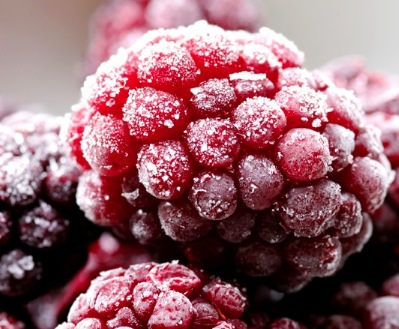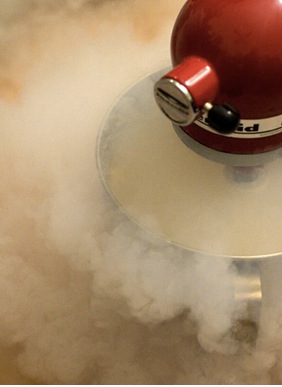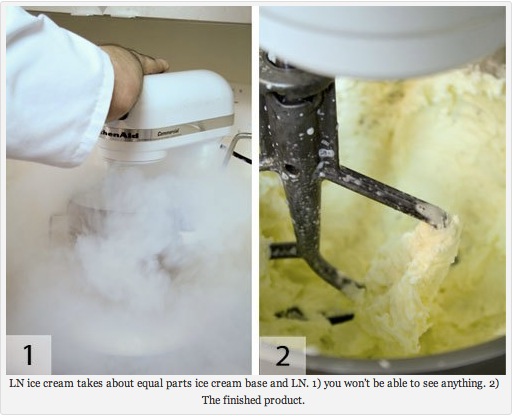FCI's Dave Arnold has posted a great liquid nitrogen primer on the school's Tech'N Stuff Blog, Cooking Issues. He does an excellent job outlining the dangers-mainly cold burns, explosions and asphyxiation. The first danger is obvious; liquid nitrogen is about -196º Celsius (-321º Fahrenheit). The other dangers are not as intuitive. Liquid nitrogen expands by 700x as it turns from liquid to gas, so storing it in any airtight container WILL result in an explosion (click
http://ucih.ucdavis.edu/docs/chemistry_301a.pdf to see what happens when the safety valve on a liquid nitrogen dewar is tampered with).

The other result of this massive nitrogen expansion is a lack of oxygen. This is the most common cause of death from liquid nitrogen. As the gas expands it displaces all of the oxygen in the room, so if a lot of of liquid nitrogen is spilled on the floor it can evacuate that room of all oxygen. Making the situation worse is the human body's lack of reaction. The panic feeling we experience when holding our breath under water is from the body's inability to expel CO2 that has built up in our system-not from our lack of oxygen. 70% of the air we breathe is nitrogen, so your lungs have no problem expelling CO2 in a nitrogen heavy environment. For this reason, your body sends no danger signals and it's possible to suffocate before you have any idea there's something wrong.


Chef Dave lists the following guidelines to follow:
• Do Not use LN in an unventilated area.
• Never go into an elevator with LN. If a dewar breaks in the elevator, you’re dead.
• Never carry LN in a vehicle’s passenger compartment. You get into an accident, the LN spills and vaporizes, you suffocate instantly.
• If you see someone passed out near an LN tank, do not try to help. Many people who die from nitrogen suffocation were trying to help co-workers. If the victim has passed out they are probably already dead. Call 911.
• Invest in an oxygen meter, like the one shown in the picture above.
• We can’t cover every eventuality here—be sensible.

Check out the rest of the article to find lots more info than just what you have to be wary of when using liquid nitrogen. There's excellent advice on how to purchase, store, and dispense LN as well as a number of applications including how to make ice cream, chill glasses properly, powder fresh herbs, make cocktails and more. It's a fascinating article on a fascinating blog.
Source: Cooking Issues
http://cookingissues.wordpress.com/primers/liquid-nitrogen-primer/